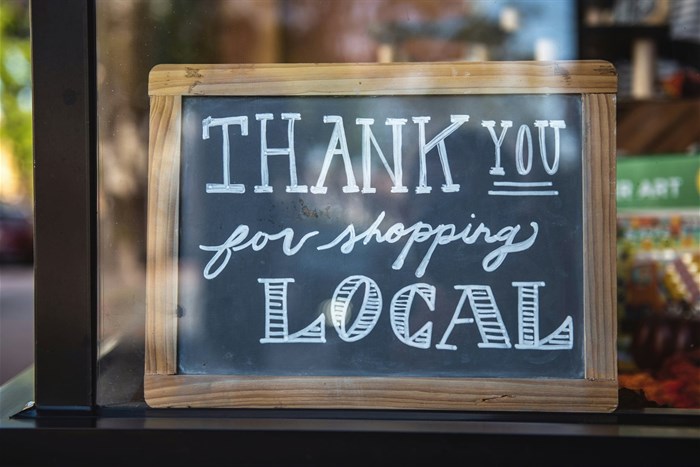The first four months of 2024 have not gone by without challenges, and as the year progresses small businesses have had no choice but to go along with it.
This month’s SME Forecast compiled by Miguel da Silva, managing executive at Retail Capital, a division of TymeBank, takes a wider look at the significant impact international and local events are having on South African businesses.
“The world is so intimately connected, that while it might feel like we are watching things unfold from afar, the reality is that everything we see impacts how we do business,” says da Silva. “Understanding the wider world puts us in a stronger position to manage the ripple effects that come our way, not to mention being acutely aware of what is happening at home.”
Here are the top five events SMEs need to be aware of going into May:
1. Geopolitical tensions increase
While the significance of the recent conflict between Israel and Palestine cannot be underplayed, it is the latest in a long list of global events that have drawn the focus of the world.
If we remove ourselves from the devastating human cost of global tensions, the single biggest impact on the global market is the increase in the price of oil. It is the lifeblood of the world’s economies, and its price impacts everything from fuel and transport to manufacturing and food pricing.
From the Russian invasion of Ukraine to Covid-19, the withdrawal of Western troops from Afghanistan, Brexit in the UK and Europe and the ongoing tensions between the US and China – there isn’t a time when significant, world-changing events aren’t on the radar.
And these events, no matter how far removed they are from South Africa, are undoubtedly impacting the daily lives of South Africans.
For SMEs, an increase in the oil price has a direct effect on bottom lines. Manufacturing, retail, construction, agriculture, and every industry - including e-commerce – are impacted by hard cost increases when the oil price goes up.
Haitham Al Ghais 25 Mar 2024
But absorbing costs alone is not sustainable.
Our advice is to make sure your business is fit for the times we are living in, and adaptable enough to change models, products and prices in line with industry and global fluctuations.
Absorbing extra costs as a business owner is one way to manage increases, but as costs constantly increase, profit is eroded, and the sustainability of a business is greatly affected.
Consumers never welcome increases in prices, but if managed responsibly and openly, the increases can be understood and accepted as part of worsening market conditions across the board.
While e-commerce businesses are not immune to increases in the oil price – given they need to be built around sound, real-world, logistic networks – moving online can create significant breathing room for business owners.
By having an app or a website as your shop front instead of a physical location, you can reduce overheads, and the automation linked to digitisation means your business can operate 24 hours a day without increases in energy or labour costs.
2. Supply chains remain under strain
2024 has so far proved to be a year of supply chain issues. Not only have carrier ships had to change their routes to avoid the perceived risks of travelling through the Suez Canal and the Red Sea, but shipping through the Black Sea and the Mediterranean continues to be fraught with issues because of the Ukraine and Gaza conflicts.
Add to this the threat of another popular shipping route through the Strait of Hormuz near Iran and the UAE being closed due to tensions in the area, we could see approximately 21% of the world's shipping of natural gas come under strain.
The supply of oil, grain and everything in between is being affected.
Even if goods do make it through these areas unscathed, there are other factors to consider that push up costs, like insurance, time, and wastage.
SMEs who import goods are going to face increasing costs to insure products travelling across the world, and there are no guarantees about the timings for physical delivery given the volatility we are experiencing.
As an extreme example during the pandemic, we saw months of delays in cargo ships being able to offload goods, which meant fresh produce was completely wiped out and even things like clothing lines felt the pain as garments were stocked in shops months after they were “the latest fashion”.
To help overcome this, the most robust option in the face of such supply uncertainty is to look closer to home. SMEs that can source locally and identify suppliers of goods in South Africa can give themselves a competitive advantage.
The impact of sourcing locally has a number of positive implications. Not only will it improve domestic economic activity, and create jobs, but it also allows for the growth of new SMEs who can help fulfil the demand.
3. Watching the Fed like a hawk
Economists are anxiously waiting for the US’s Federal Reserve Bank – the USA’s central banking system that is responsible for regulating the national financial system – to show its hand on when they will start to reduce interest rates.
Speculation in the markets is rife, but as things stand the Fed is remaining tight-lipped on when they will make a move, to increase or decrease the interest rate, which is currently at a 22-year high.
What we do know is that the interest rate in the US is at 5.25% and has been since July 2023. Similarly, South Africa is sitting at a 16-year high of 8.25% since May of 2023.
Typically interest rates are kept high to try and curb inflation, so realistically we will only start to see reductions once inflation reduces to a manageable rate. In the US, inflation is currently running at a 2.4% annual rate, or 2.8% when taking food and energy costs into consideration.
However, 2% is the goal and the number economists will consider as having inflation under control.
But, as South Africans, why should we care?
Any change in US interest rates can have significant impacts on global financial markets, including currency exchange rates, commodity prices, and investor sentiment.
Additionally, fluctuations in US interest rates can influence capital flows into and out of South Africa, affecting borrowing costs, investment decisions, and overall economic conditions in the country.
We also see that changes in the US interest rate can be an indicator to our own interest rate levels.
Howard Schneider, Yoruk Bahceli and Akriti Sharma 23 Mar 2023
With the next interest rate announcement in South Africa due to be released by the South African Reserve Bank (SARB) on 30 May, many economists predict it will stay at 8.25%, due in part to the interest rate in the US remaining consistent.
While US interest rate cuts are not necessarily directly tied to South Africa’s cuts – with the South African Reserve Bank often stating that it looks at a variety of factors to determine policy direction – local trends tend to follow US trends.
The outlook then is that the Monetary Policy Committee (MPC) in South Africa is expected to hold interest rates unchanged for much of the year, with the first cut of 25 bps forecast for September, followed by another 25-bps reduction in November.
While a cut is tentatively being spoken about in the US in a similar time frame.
For SMEs, this means the cost of debt remains high e.g. offices whether rented or owned, purchase of vehicles, costly machinery that is bought on credit etc.
Of course, business owners of SMEs and their staff are consumers too meaning that, because of the high-interest rate, just about everything remains expensive impacting people’s pockets.
But high-interest rates also mean a higher return on savings investments. If you are fortunate enough to be able to put any money into savings accounts, now is the time to do it. Any used capital will see a considerable, relatively risk-free, return while interest rates remain high.
4. Increases in cost of living
Inflationary pressures like interest rates and supply chain costs are all linked to the cost of living increases, and because of this, business owners can expect – if they aren’t already– an increase in requests from staff for salary increases to match market increases.
While we understand that owners do want to pay their staff more if at all possible, the reality is that with conditions as they are, it isn’t always feasible.
While salary increases can’t always be given, the option of finding meaningful value to add to salaries can prove significant for members of staff.
Increasing work-life balances with different working models, more paid leave, staff discounts on company products or using supplier connections to provide discounts on relevant goods and services for employees and their families all help offset cost increases.
Incentives like spot bonuses, subsidised staff meals and transport are all ways to help existing salaries go further each month.
The key is to make staff feel valued and part of the business, so implementing profit-sharing or employee stock ownership programmes will also make staff feel linked to the company’s future success.
5. The election
The country is going to the polls in a few short weeks, and while businesses should demand a lot from our political parties - to shore up the SME industry - what we really need to push for is trouble-free voting, counting, and announcing.
Anything other than a free, fair, and transparent election process will push South Africa backwards in the eyes of the international community, at a time when we want to be showing our strength and unity.
The stability that trouble-free election projects can be a sign to investors that the country is open, working and a good bet for foreign capital.
The weeks and months ahead may be challenging, but showing a strong, united South Africa, no matter the result, can only be a good thing for SMEs, consumers, and the economy at large.

































